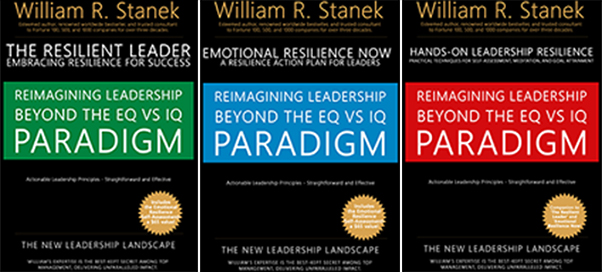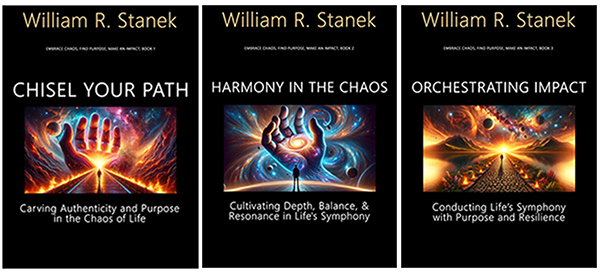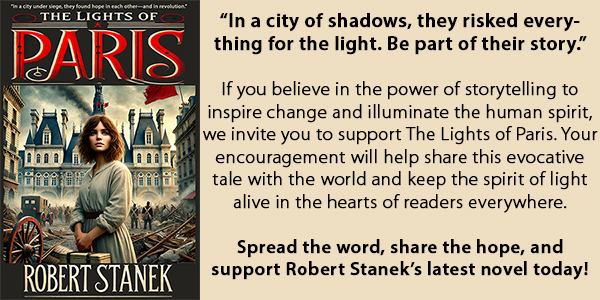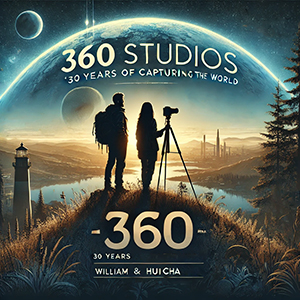Capturing the Infinite: Night Photography and the Mysteries of the Cosmos
(June 1, 2025)


Join William at the crossroads of technology, business, and leadership, where true influence isn't about titles - it's about inspiring action, driving change, and guiding others with integrity. Discover how authentic leadership can transform not just careers, but entire industries.
Discover William Stanek's Exclusive Art Collection
Explore and purchase the stunning art featured on this site. Own a piece of William Stanek's unique and captivating artwork today!
Capturing the Infinite: Night Photography and the Mysteries of the Cosmos
Night photography is a realm where the boundary between earth and the cosmos blurs, revealing the profound beauty and mysteries that exist beyond our daily perceptions. For William Stanek, this genre of photography is not just about capturing images in the dark; it's about exploring the infinite, capturing the silent dialogue between the earth and the stars, and bringing to life the celestial wonders that fill the night sky. This article delves into William’s night photography, examining the techniques he employs, the challenges he overcomes, and the unique perspective he brings to capturing the mysteries of the cosmos.
The Allure of the Night Sky: A Personal Connection
For William Stanek, the night sky holds a deep personal connection. Growing up in rural Wisconsin, far from city lights, he often found solace and inspiration under the vast, star-filled sky. This early exposure to the night sky instilled in him a lifelong fascination with the cosmos, which later became a central theme in his photography.
William’s work in night photography is rooted in this personal connection. The night sky, with its endless expanse and hidden mysteries, offers him a canvas to explore themes of solitude, contemplation, and the infinite. His images are not just photographs; they are a reflection of his ongoing dialogue with the universe.
Embracing the Darkness: Techniques for Shooting in Low Light
Night photography presents unique challenges, particularly in terms of lighting. With natural light being minimal, capturing the stars, the moon, and other celestial bodies requires precise techniques and a deep understanding of the interplay between light and darkness.
William’s approach to night photography is meticulous. He carefully selects his locations, often choosing remote areas far from light pollution to ensure the clarity of the stars. His equipment is tailored for low-light conditions, with lenses that have wide apertures and cameras capable of high ISO settings without introducing excessive noise.
One of William’s key techniques is the use of long exposures. By leaving the camera’s shutter open for extended periods, he captures the movement of the stars across the sky, creating stunning star trails that convey the earth’s rotation. However, he is mindful of the balance between capturing the movement and maintaining sharpness in the surrounding landscape, often using foreground elements like trees or mountains to anchor the image.
The Art of Capturing the Milky Way
Among the many celestial phenomena that William photographs, the Milky Way holds a special place. The sight of this vast, luminous band of stars stretching across the sky is both awe-inspiring and humbling, and capturing it requires a blend of technical skill and artistic vision.
William’s Milky Way photography is characterized by his ability to capture the galaxy in all its glory while maintaining the integrity of the surrounding landscape. He often shoots during the new moon, when the sky is at its darkest, allowing the Milky Way to shine brightly. His compositions are carefully crafted to include elements of the earth, such as silhouetted trees or distant mountains, creating a connection between the heavens and the earth.
In post-processing, William takes care to enhance the natural colors of the Milky Way without over-saturating the image. His goal is to present the galaxy as it appears to the naked eye, with all its subtleties and nuances intact.
Exploring Lunar Landscapes: The Moon as a Subject
The moon, with its changing phases and luminous presence, is another key subject in William’s night photography. Whether it’s a crescent moon hanging low on the horizon or a full moon illuminating the night landscape, William captures the moon with a sense of reverence and wonder.
To photograph the moon, William employs a variety of techniques depending on the phase and the desired effect. For a sharp, detailed image of the moon’s surface, he uses a telephoto lens and a fast shutter speed to avoid any motion blur. When capturing the moon as part of a larger landscape, he carefully balances the exposure to ensure that the moon is not overexposed, while still retaining detail in the surrounding environment.
William also explores the interplay between the moon and other celestial bodies. For instance, he has captured stunning images of lunar eclipses and the moon’s close encounters with planets like Venus and Mars. These images showcase not just the beauty of the moon, but its role in the dynamic dance of the cosmos.
Celestial Events: Documenting Meteor Showers and Eclipses
Meteor showers, eclipses, and other celestial events offer unique opportunities for night photography, but they also present significant challenges. These events are often fleeting, requiring precise timing, location scouting, and a deep understanding of the celestial mechanics involved.
William approaches these events with the same meticulous preparation that defines all his work. He studies the timing and trajectory of meteor showers, choosing locations that offer a clear view of the sky and minimal light interference. During meteor showers, he uses long exposures and wide-angle lenses to capture as many meteors as possible within a single frame, often creating composite images that showcase the full spectacle of the event.
Lunar and solar eclipses require even more precision. William plans these shoots well in advance, selecting locations that offer the best vantage points and preparing his equipment to handle the rapid changes in light. His eclipse photographs are not just images of the event; they are a chronicle of the celestial drama as it unfolds.
Overcoming Challenges: The Physical and Mental Demands of Night Photography
Night photography is not for the faint of heart. It requires not only technical skill but also physical and mental resilience. Long hours spent in remote locations, often in harsh weather conditions, are part and parcel of the process. For William, these challenges are part of the allure of night photography.
One of the biggest challenges is dealing with the cold. Many of William’s night shoots take place in high-altitude or northern locations, where temperatures can drop significantly after dark. Staying warm while maintaining the dexterity needed to operate his equipment is a constant battle. He often relies on specialized clothing and gear to endure the cold, along with mental discipline to stay focused during long, solitary hours in the field.
Another challenge is the need for patience. Celestial events don’t always occur as expected, and conditions can change rapidly. William’s success in night photography is due in large part to his ability to wait—sometimes for hours or even days—for the perfect moment to capture an image. This patience, combined with his technical expertise, allows him to create photographs that are both visually stunning and emotionally resonant.
The Mystical and the Mundane: Finding Beauty in the Ordinary
While much of William’s night photography focuses on grand celestial events and dramatic landscapes, he also finds beauty in the more mundane aspects of the night. A solitary tree under a starry sky, the quiet glow of a distant town, or the reflection of the moon on a calm lake—these simple scenes are transformed into works of art through William’s lens.
His ability to see the extraordinary in the ordinary is what sets William’s night photography apart. He approaches each scene with a sense of wonder, looking for the hidden beauty in the world around him. This approach reflects his broader philosophy as an artist: that beauty is everywhere, waiting to be discovered and captured.
The Narrative of Night: Storytelling Through Photography
For William, photography is not just about capturing images; it’s about telling stories. This is particularly true in his night photography, where the interplay of light and shadow, the movement of the stars, and the presence of celestial bodies all contribute to a larger narrative.
Each of William’s night photographs tells a story—of the earth’s rotation, the passage of time, or the connection between the heavens and the earth. These stories are not always explicit; often, they are hinted at through subtle details and compositions that invite viewers to look deeper.
In some images, the story might be one of solitude, as a lone figure stands under a vast, star-filled sky. In others, it might be one of connection, as the light of the moon reflects off a still lake, creating a link between the earth and the sky. Whatever the story, William’s night photography invites viewers to engage with the image on a deeper level, to see beyond the surface and explore the underlying narrative.
The Infinite and the Intimate: Balancing Scale in Night Photography
One of the unique aspects of night photography is the way it plays with scale. The night sky is vast, infinite, and overwhelming in its grandeur, while the earth is small, intimate, and familiar. Balancing these two scales is a key challenge in William’s work.
William often uses foreground elements to create a sense of scale, placing a tree, a building, or a person in the frame to anchor the image and provide a point of reference. This technique not only helps to convey the vastness of the night sky but also creates a sense of intimacy, as the viewer is drawn into the scene.
In some of his images, William reverses this approach, focusing on a small, intimate detail—a leaf, a rock, or a reflection—while allowing the night sky to fill the background. This inversion of scale creates a sense of wonder, as the ordinary is juxtaposed with the extraordinary, and the small becomes significant in the context of the infinite.
The Legacy of Night: William Stanek’s Contribution to Night Photography
William Stanek’s work in night photography is more than just a personal pursuit; it is a significant contribution to the field of photography as a whole. His images have inspired countless photographers to explore the night sky, and his techniques have become benchmarks for quality and creativity in the genre.
William’s legacy in night photography is built on his unique ability to blend technical precision with artistic vision. He has pushed the boundaries of what is possible in low-light photography, using the tools and techniques of the trade to capture images that are both scientifically accurate and artistically compelling.
But perhaps his greatest contribution is the way he has made the night sky accessible to everyone. Through his work, William has shown that the night is not just a time of darkness and sleep, but a time of beauty, mystery, and infinite possibilities. His photographs invite viewers to look up, to explore the night sky, and to discover the wonders that exist beyond the frame.
In capturing the infinite, William Stanek has created a body of work that will continue to inspire and awe for generations to come. His night photography is not just a record of the cosmos; it is a testament to the power of art to connect us with the mysteries of the universe.

Transform your life with practical wisdom. Discover William Stanek's 'Living Well' series - your guide to a balanced and fulfilling life.
Your Support Matters
Purchasing artwork from William Stanek's collection not only brings beauty into your life but also helps us continue to share. Thank you for supporting our creative journey!

Support The Lights of Paris by Robert Stanek, William Stanek's pen name! Through vivid historical detail and deeply moving character stories, Robert takes readers on an unforgettable journey through one of history’s most transformative times.







